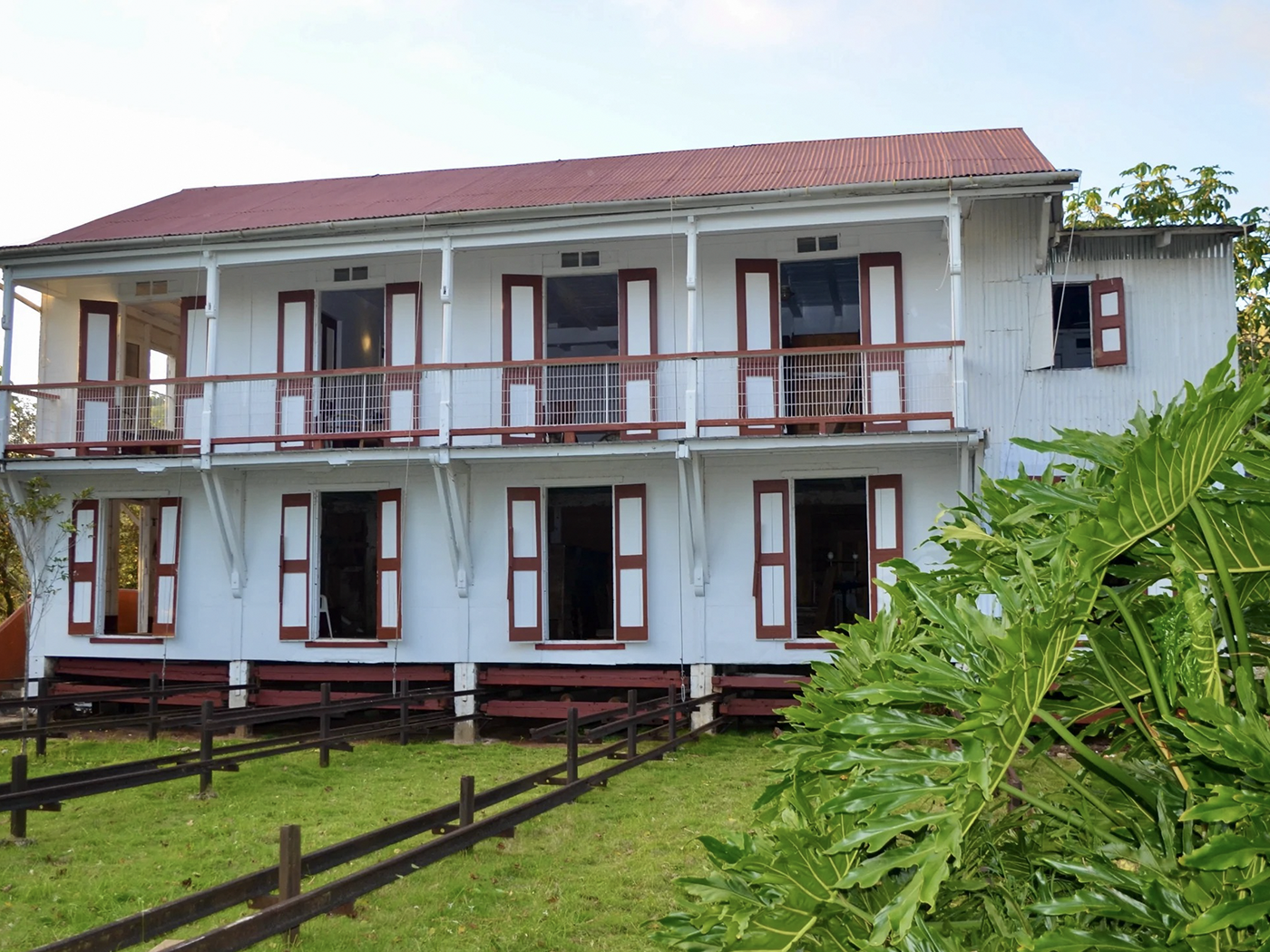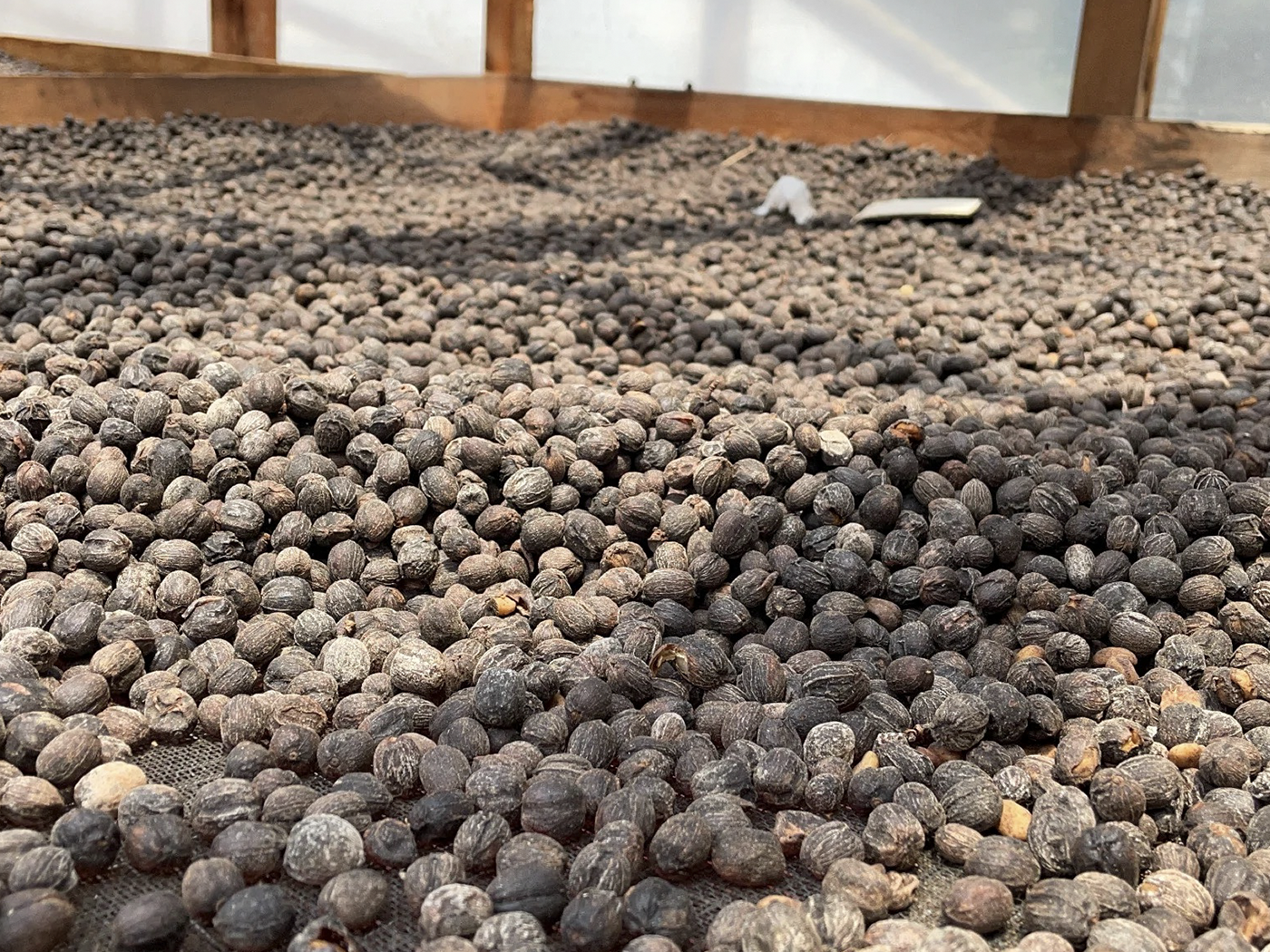They can take away everything in life except your wisdom. I remember hearing this countless times from my dear father. Although at the moment I didn't pay attention to it, that catch phrase always stayed with me and, as time goes by, it makes more sense. Unintentionally or not, in every new project within Cuela we always seek to shelter ourselves in the element of education. We don't just want to sell you a product and that's not our purpose. Our desire has always been to present you the best coffee proposals that Puerto Rico has, but highlighting its history and also the mission of each of the brands; We understand that it is the best way to honor the coffee history of Puerto Rico and so we continue to learn.
On the other hand, bearing in mind the element of education and with the mission of continuing to transmit knowledge through Cuela, we decided this past July to undertake a trip to Guatemala. And they will wonder why to Guatemala? Because it is a country with an impressive coffee tradition and, in turn, it was the largest coffee producer in Central America from the 20th century to the beginning of the 21st century. At the moment, Guatemala as a producer is very well seen worldwide and is among the 10 largest coffee producers in the world with an annual production of 449,743,000 pounds of coffee. Truly impressive.

On the other hand, for a long time the coffee producing countries have had to deal with the bad reputation that they are not good at making a good cup of coffee. On the one hand, it is true because large buyers worldwide such as European countries and the United States have tirelessly dedicated themselves to perfecting roasting and the cup of coffee starting from a scientific point of view. The great importance of the producing country was to produce, benefit, export, and may God distribute luck. The producer never knew where his coffee was going and this norm at the level of producing countries is trying to change. The producer wants to know what is happening with his coffee and learn about the latest trends in roasting, cupping and cup making. One of the great responsible for this change in Guatemala, without a doubt, has been the National Coffee Association of Guatemala and its coffee school.
Anacafé was created in Guatemala in 1960 with the purpose of strengthening the economy of Guatemala through the production and export of coffee. Anacafé is a union institution that watches over the interests of coffee growers and is responsible for providing its services in order to create a competitive, quality and sustainable coffee industry. We, as coffee lovers, saw a great opportunity in Anacafé to continue developing ourselves as professionals and to begin to know what the coffee industry is like in a country that has much more access to international markets.

Gustavo and I were here taking courses on roasting, cupping and preparation of alternative methods to improve our skills. As coffee professionals, we understood that taking these slightly more advanced courses was imminent. And I say advanced because Anacafé has not only focused on production, but has also developed its coffee school in which professional and amateur courses from other parts of the world and local producers come monthly to take courses in order to learn what is happening with their coffees in a cup. For us, being able to share with other coffee professionals and Guatemalan producers was something very gratifying. Knowing their experiences and the results of their cup coffees, according to their region and variety, was something impressive.
It should be noted that Guatemala is divided into eight coffee regions and they are the first country to create cup profiles, according to the coffee region. It is super interesting to perceive the marked differences that one coffee has from another, regardless of whether they are in the same country.

8 Coffee Regions of Guatemala
- Acatenango Valley (4,300 - 6,500 f.a.s.l.): It is located at an altitude of 6,500 masl and in a volcanic zone. It stands out for being a coffee with tangerine, peach and peach sensations.
- Antigua Coffee (5,000 - 5,600 f.a.s.l.): It is one of the most famous regions of Guatemala and stands out in the cup for its balance, elegance, rich aroma and chocolatey sweetness.
- Traditional Atitlán (5,000 - 5,600 f.a.s.l.): This coffee is produced on the shores of Lake Atitlán, surrounded by five volcanoes. This gives the cup incredible complexity, rich aroma, bright acidity, and robust body.
- Rainforest Cobán (4,300 - 5,600 f.a.s.l.): This region is characteristic for being humid and rainy all year round. In the cup you will find notes of fresh fruit, a well-balanced body and an excellent aroma.
- Fraijanes Plateau (4,500 - 6,000 f.a.s.l.): An active and high altitude volcanic region. In the cup you can perceive persistent acidity due to the high content of minerals in the area, a lot of aroma and defined body.
- Highland Huehue (5,000 - 6,500 f.a.s.l.): One of the most recognized regions in the past 10 years for Finca El Injerto and its seven national Cup of Excellence awards. In the cup you will find intense acidity, robust body and winey sensations.
- Nuevo Oriente (4,300 - 5,600 f.a.s.l.): A region that, thanks to the cultivation of coffee, its poverty rates decreased. In the cup you will find very good sweetness, balance and chocolate flavor.
- Volcanic San Marcos (4,300 - 6,000 f.a.s.l.): It is the region with the most rain; up to 200 inches of rain can fall. In the cup you can find sweet sensations, brown sugar and jasmine.
On the other hand, from those eight regions we had the good fortune to meet producers from Nuevo Oriente, San Marcos, Huehuetenango and Antigua. These are breaking with the traditional schemes with exotic varieties such as Geisha, Pacamara, Maragogipe, Maracaturra and Mocca. They also continue with traditional varieties such as Caturra, Borbón and Catuaí, but making new processing processes such as anaerobic, natural, natural anaerobic and honey fermentations with the purpose of making their coffee more valuable in consumer markets.
One of the most rewarding experiences we had was with the young producer Felipe Contreras, owner of Finca Gascón, in Antigua. With him we took a tour of his estate, processing plant and tasting and roasting laboratory. We met his staff in charge of the processes and they gave us a brief talk about the different processes they work with.

Felipe Contreras at Finca Gascón talking about the characteristics of the farm's soil and the effect on his coffee plants.
The one that impressed us the most was the anaerobic. It is a fermentation process without oxygen in which it seeks to enhance the attributes of the coffee even more and offer different profiles of the same variety. Here we can achieve much more complexity in the cup, fruit flavors, caramels and chocolates. A good quality washed coffee can give these notes, but in anaerobic processes, they are further enhanced.

Gustavo and Enio tasting different samples of Finca Gascón together with its owner, Felipe Contreras
Felipe, as a young producer of only 26 years old, seeks to give a new concept to what a coffee farm is. “Currently farms are not brands as such, they have little identity in the market. At Finca Gascón we seek to develop a brand at the forefront of the times and work on the subject of coffee in a way that is more adapted to the times in which we live, focusing on innovative processes and an image that identifies us as a new project in the field of coffee from Guatemala” - Felipe Contreras, founder of Finca Gascón.
We also met the great Herbert Juárez at his Coffee Shop, Bio Coffee in Panajachel, Lake Atitlán. A young producer from San Marcos who increasingly seeks to honor the great legacy of his family, who has been producing coffee in that area for decades. One of his greatest desires is to perfect his practices in coffee processes in order to be able to sell more coffee above the price established by the stock market on Wall Street. According to Juárez, sometimes, if the market price is very low, they are affected because their costs on the farm would possibly be higher.
 San Marcos producer Herbert Juarez in his coffee shop at BioCoffee in Panajachel, Lake Atitlán.
San Marcos producer Herbert Juarez in his coffee shop at BioCoffee in Panajachel, Lake Atitlán.
On the other hand, we were also sharing with the roaster, taster and barista champion of Guatemala in 2014, José Miguel Echeverría, a tireless perfectionist in roasting, making coffee and a firm believer in coffee growing in his country. "At Teco Coffee House we seek to change the history of coffee consumption in Guatemala; On the one hand, working hand in hand with the coffee grower and teaching him about his product, potentiating it to the maximum and on the other hand, teaching the Guatemalan consumer what our coffee represents before the world, while giving value to the people behind a cup of coffee. We build a community that is proud of its land and what it produces." José Miguel Echeverría, Founder - Teco Coffee House
 José Miguel Echeverría in his laboratory and cafeteria en Guatemala.
José Miguel Echeverría in his laboratory and cafeteria en Guatemala.
Guatemala gave us a lot this past July; We learned a lot and we are left with the desire to continue learning more about coffee in Puerto Rico, Guatemala and all the producing countries that we get to know little by little. We would like to give a huge thank you to the staff of instructors at Escuela de Café de Guatemala. They are: the cupper Jackie Medinilla, the roaster and barista, Carlos Cuellar, the barista Wilber Hernández, the coffee specialist Diego Aguilar and the barista Edvin González. They were a key piece in our experience and in lighting the fuse of curiosity to continue learning in the world of coffee.
As a surprise and curious fact. We have brought some Guatemalan coffee from three coffee growing regions: Huehuetenango, Antigua and Finca La Labor in Ciudad, Guatemala.
Note: Finca Gascón laboratory photos were provided by Finca Gascón.




3 comments
Abdiel Flores
Están haciendo un trabajo excelente! Muy inspirador! Voy por mi porción guatemalteca…
Están haciendo un trabajo excelente! Muy inspirador! Voy por mi porción guatemalteca…
Emma Matos
Les felicito de corazón y muy orgullosa de ustedes. Jóvenes emprendedores puertorriqueños sedientos de aprender y comunicar.
En moemntos retantes es que se demuestra la consagración o la perdición de cada cual.
Fueron valientes y se tiraron a ésta aventura en el mejor lugar. Guatemala. Con todo y pandemia. Del cual me han dicho, conocedores de café en Puerto Rico que hay que ir. Luego vendrán otros lugares, otras experiencias.
Algo verdaderamente loable.
Les felicito ! Adelante !
Les felicito de corazón y muy orgullosa de ustedes. Jóvenes emprendedores puertorriqueños sedientos de aprender y comunicar.
En moemntos retantes es que se demuestra la consagración o la perdición de cada cual.
Fueron valientes y se tiraron a ésta aventura en el mejor lugar. Guatemala. Con todo y pandemia. Del cual me han dicho, conocedores de café en Puerto Rico que hay que ir. Luego vendrán otros lugares, otras experiencias.
Algo verdaderamente loable.
Les felicito ! Adelante !
Enio Suasnavar
Excelente reseña y tremenda experiencia. Sigan por la ruta trazada, que lo que se hace con pasión siempre la recompensa llega.
Excelente reseña y tremenda experiencia. Sigan por la ruta trazada, que lo que se hace con pasión siempre la recompensa llega.